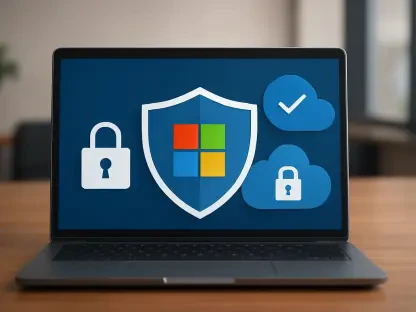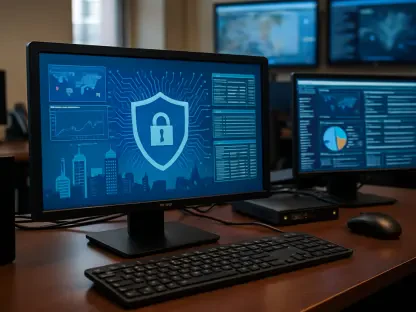What happens when the digital walls protecting sensitive data, critical infrastructure, and even national security are guarded by too few hands? In 2025, the cybersecurity landscape reveals a stark reality: a staggering 65% of organizations worldwide report unfilled positions in this vital field, creating a crisis that isn’t merely a staffing issue but a ticking time bomb threatening everything from personal privacy to global stability. This shortage of skilled professionals, coupled with mounting cyber threats, paints a picture of vulnerability that demands immediate attention.
The significance of this crisis cannot be overstated. As cybercriminals grow bolder and more sophisticated, the gap between the need for cybersecurity expertise and the available workforce widens, leaving organizations exposed to devastating attacks. Social engineering, exploited vulnerabilities, and malware are just the tip of the iceberg, with 35% of surveyed professionals noting an increase in attack frequency this year. This story isn’t just about numbers—it’s about the real-world consequences of failing to protect digital assets in an increasingly connected world.
A Ticking Time Bomb: The Threat of Cybersecurity Shortages
The cybersecurity workforce shortage poses a profound risk to global security. With millions of records breached annually and ransomware attacks crippling businesses, the lack of trained professionals to combat these threats is alarming. Many organizations, from small enterprises to government agencies, find themselves outmatched by adversaries who exploit understaffed defenses with ruthless precision.
This vulnerability extends beyond corporate losses. Critical infrastructure—think power grids, hospitals, and transportation systems—relies on robust cybersecurity to function safely. A single successful attack in these sectors could disrupt lives on a massive scale, highlighting why the shortage of skilled defenders isn’t just a technical glitch but a societal peril.
The urgency to address this gap grows daily. Reports indicate that 43% of cybersecurity professionals anticipate an attack on their organization within the next year. Without enough trained individuals to stand on the front lines, the potential for catastrophic breaches looms larger than ever, underscoring the need for swift, decisive action.
The Perfect Storm: Roots of a Deepening Crisis
Several factors converge to create this dire situation in cybersecurity. Staffing shortages are rampant, with 55% of organizations feeling their teams are understaffed, even if this marks a slight improvement from previous years. Budget constraints add fuel to the fire—53% of respondents consider their funding inadequate, and only 41% expect increases in the coming year.
Leadership commitment also falls short in many cases. A troubling 56% of professionals believe their boards genuinely prioritize cybersecurity, revealing a disconnect at the top. This lack of strategic focus hampers efforts to build resilient teams capable of tackling an evolving threat landscape that shows no signs of slowing down.
Attack frequency compounds these challenges. With 35% of organizations experiencing more incidents in 2025, the pressure on existing staff intensifies. Cybercriminals target everything from personal data to critical systems, exploiting gaps left by overworked teams and insufficient resources, making it clear that systemic issues must be addressed urgently.
Breaking Down the Struggle: Staffing, Skills, and Stress
Delving deeper, the crisis reveals itself in multiple dimensions, starting with recruitment woes. Hiring delays plague the industry—38% of organizations take three to six months to fill entry-level roles, while 39% face similar waits for senior positions. Retention is equally problematic, as 50% struggle to keep talent amid fierce competition and burnout risks.
Skills gaps further complicate the picture. Only 27% of respondents find university graduates prepared for cybersecurity roles, with deficiencies in critical areas like incident response (43%), data security (39%), and threat detection (39%). Beyond technical expertise, soft skills such as critical thinking (57%) and communication (56%) are often lacking, hindering effective teamwork and problem-solving.
Stress levels among professionals have soared, with 66% reporting higher pressure compared to five years ago. A complex threat environment, cited by 63%, drives this tension, while specific attack vectors like social engineering (44%) keep teams on edge. This combination of understaffing, unprepared talent, and mounting stress creates a workforce stretched to its breaking point.
Voices from the Trenches: Realities on the Ground
Insights from industry leaders shed light on the gravity of these challenges. Chris Dimitriadis, a prominent voice in the field, cautions that progress remains dangerously slow, emphasizing that “investing in a well-trained workforce isn’t just about defense—it’s about building trust and staying competitive.” His words resonate against a backdrop of concern, as confidence in incident response lingers at a mere 41%.
Stories of exhaustion and overwhelm surface frequently among professionals. Many describe feeling like they’re fighting an uphill battle, tasked with safeguarding entire organizations against odds that seem increasingly insurmountable. The emotional toll of constant vigilance, paired with the fear of inevitable breaches, weighs heavily on those in the field.
These firsthand accounts align with stark statistics—43% of surveyed individuals expect an attack within the next 12 months. Such realities paint a vivid picture of an industry in distress, where the human element of cybersecurity is as critical as any technological solution, yet remains undervalued and unsupported.
Building Defenses: Strategies for a Resilient Future
Turning this crisis around demands actionable, forward-thinking approaches. Organizations must elevate cybersecurity to a board-level priority, ensuring budgets match the escalating risks—41% expecting funding boosts is far from sufficient. Allocating resources proactively, rather than reactively, could make the difference between prevention and disaster.
Entry pathways into the field need expansion as well. With 61% of respondents valuing adaptability and 60% prioritizing hands-on experience over traditional degrees, embracing career switchers—46% of teams include such talent—offers a viable solution. Tailored training programs focusing on incident response and threat detection can help close specific skill gaps efficiently.
Finally, addressing workforce stress is non-negotiable. Creating supportive environments with manageable workloads can mitigate burnout, recognizing that a demoralized team cannot protect effectively. Combining these strategies—leadership commitment, accessible training, and cultural support—lays the groundwork for a stronger, more resilient cybersecurity ecosystem capable of facing tomorrow’s threats.
Looking back, the journey through 2025 highlighted a cybersecurity landscape battered by persistent staffing shortages, inadequate budgets, and a workforce strained by sophisticated threats. Despite these hurdles, glimpses of progress emerged in slight improvements in perceived understaffing and a growing recognition of diverse skill sets. The path forward became clearer with a focus on actionable steps: prioritizing cybersecurity at the highest levels, enhancing training for incoming talent, and fostering environments that sustain rather than drain defenders. These efforts, if sustained, promised to transform vulnerabilities into strengths, ensuring that digital defenses could stand firm against an ever-evolving enemy.









